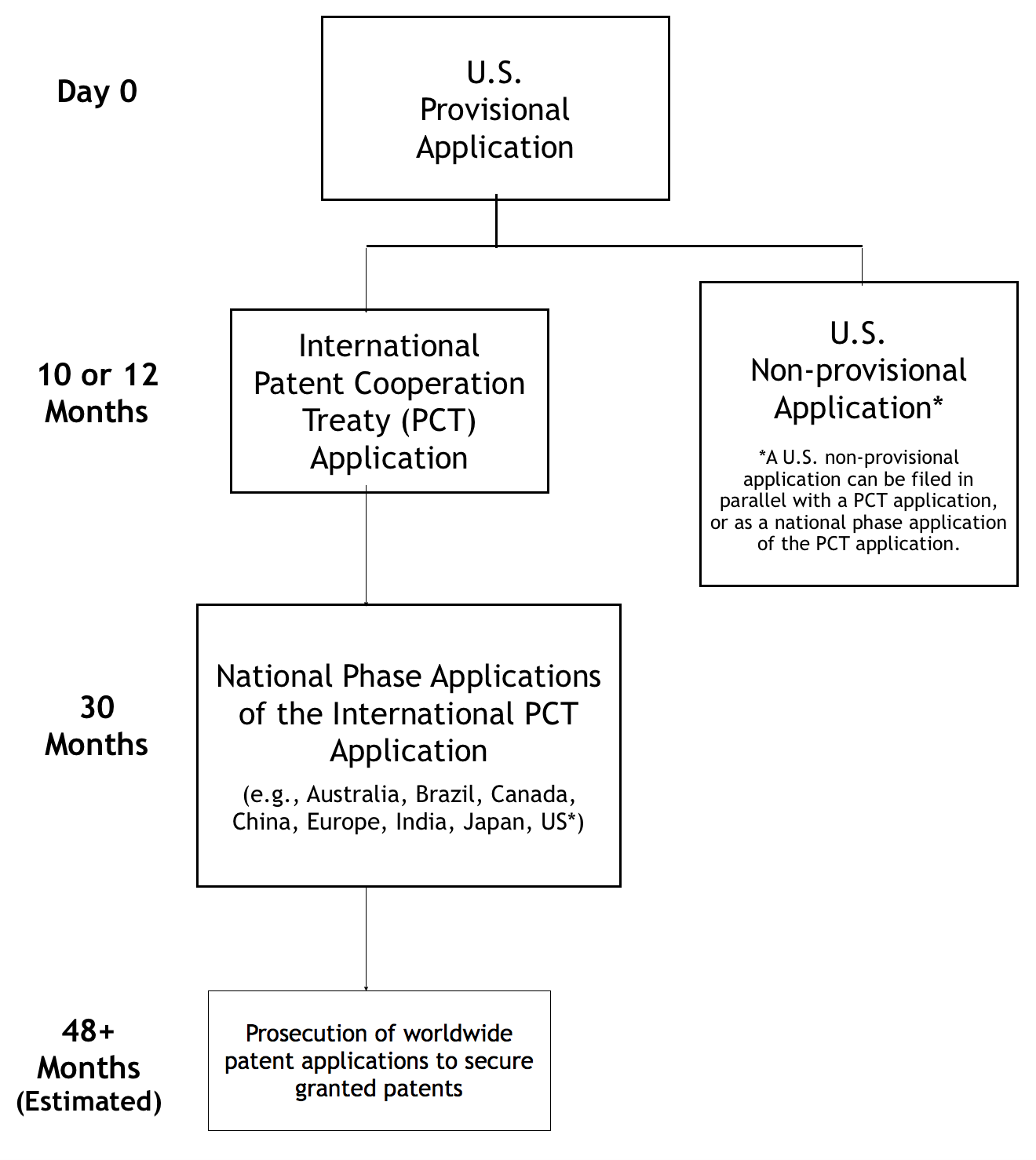Patents 101
There are three main types of patents in the United States:
- Utility patents (the most common) cover new and useful processes, machines, articles of manufacture, or compositions of matter;
- Design patents cover new, original, and ornamental designs for articles of manufacture; and
- Plant patents cover asexually reproduced, distinct and new varieties of plants.
Need a refresher or want an introduction to the patenting process in the United States? The US Patent and Trademark Office (USPTO) website (www.uspto.gov) has several great resources that explain the different types of intellectual property and general information regarding patents in the United States, as well as an overview of the patenting process in the United States, including a helpful flowchart summarizing the process of obtaining a utility patent.
How can we help?
Even if you understand the USPTO’s overview of the patent application process, the USPTO does not assist applicants in determining the inventions for which patent applications should be pursued. Patent GC’s attorneys can help with this critical step by assisting you in developing and executing a strategy for protecting your invention. This process may include helping to (a) decide what subject matter to protect and whether it is patentable; (b) understand the patent landscape around this subject matter; and (c) obtain patent protection in the United States and worldwide in a cost-effective manner. An important part of this process is searching and evaluating inventions.
Another common issue faced by many of our clients, particularly emerging companies in the life sciences and technology industries, is the need to secure intellectual property rights as quickly as possible, while maintaining a high quality portfolio, managing costs and cash flow, and staying within budgets. Our attorneys can help you navigate these competing interests by developing a comprehensive patenting strategy that aligns with your overall business goals.
A typical filing timeline
While there is no standard timeline for securing patent protection in the United States and worldwide, for early stage companies and cutting-edge research universities, a utility patent filing timeline generally includes the following stages:
1. U.S. provisional patent application stage (note: a provisional application cannot be the basis for a design patent application).
- A provisional application is a “placeholder” application, only in the sense that it will not be subjected to substantive examination and will not be published
- It has a 12-month pendency period that cannot be extended
- It is not a “quick-and-dirty” application which can be completed later – any information not included in the provisional patent application, which is presented at a later time, is likely to be considered “new matter” and will not be given the benefit of the provisional patent application filing date.
- More information about U.S. provisional applications can be found here.
2. Non-provisional patent application stage – within 12 months of the earliest provisional application filing date (or 10 months if the invention is based on federally funded research), a non-provisional application must be filed in order to continue to pursue a patent on the invention.
PCT Application
A common nonprovisional application is an international application called a Patent Cooperation Treaty (PCT) application.
Process
- A PCT application is filed with a Receiving Office (RO)
- An International Searching Authority (ISA) – the patent office of a selected country – performs a search directed to the subject matter of the PCT application
- ISA issues an International Search and Written Opinion (ISR/WO) on the patentability of the PCT application’s subject matter.
The USPTO is typically the RO for U.S.-based applicants; however, there are many options for the ISA in addition to the U.S. A complete list of ROs and ISAs can be found here.
A PCT application is NOT an international patent.
A PCT application only establishes an international filing date in all PCT member states, leading to a preliminary international examination. It does not result in the grant of a patent. In fact, there is no such thing as an “international patent.” A PCT application is essentially a placeholder, much like a U.S. provisional patent application.
U.S. Nonprovisional Application
- Many U.S. companies also file a U.S. nonprovisional application with the USPTO in parallel with filing a PCT application.
- Filing concurrently with a PCT application enables a substantive examination of the U.S. nonprovisional to begin before the end of the pendency period for the PCT application.
- More information about U.S. nonprovisional applications can be found here.
3. National Phase Application – to obtain a granted patent in a foreign nation, the PCT application must be “nationalized” by filing a national phase application with the specific national and/or regional Patent Offices of every PCT member state in which patent protection is desired, and do so within 30-months of the first patent application on the invention.
- A national phase application will be granted or rejected according to the applicable patent law in each national and/or regional Patent Office in which patent protection is desired.
- More information about the international phase of PCT applications can be found here.
- More information about national phase applications can be found here.
Flowchart of typical filing timeline
The diagram below illustrates a typical utility patent filing timeline. However, before you can choose an appropriate filing strategy, you should conduct a preliminary examination of short-term and long-term business goals, budget, and cash flow. In some cases, it is more desirable to obtain a patent as quickly as possible rather than to delay issuance by use of placeholders such as the provisional and PCT applications. If you have questions about how to handle the budget and timing issues associated with patent applications, or any other patent strategy concerns, our attorneys can assist you.

